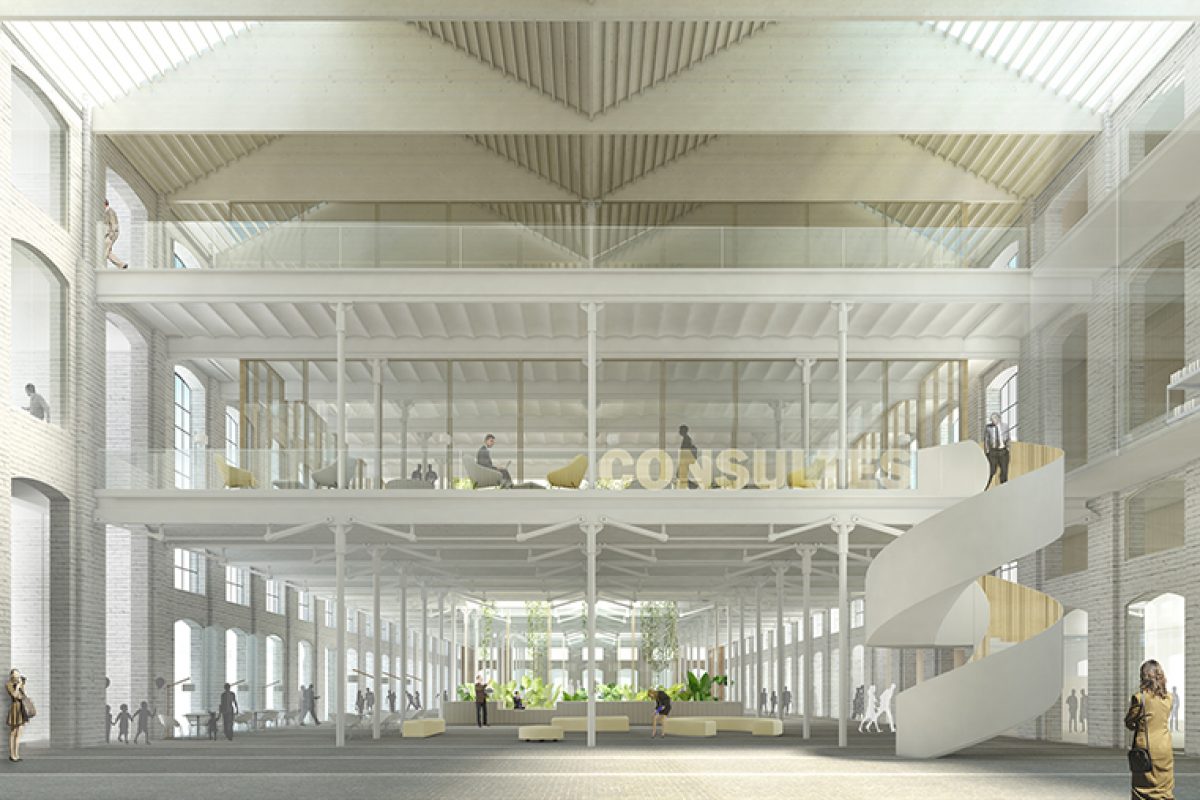Architects OP Team, Mendoza Partida and Ramón Valls will rehabilitate Can Batlló, future house of City of Barcelona Archives

The new City of Barcelona Archives will be a building that is open to the public, a new arts centre where the city people are as important as the documents recording the city's history
The project, by architects Santi Orteu, Gloria Piferrer and Xavier Farré, members of OP Team, a Catalan practice specialising in cultural amenities; Héctor Mendoza and Mara Partida, partners in the international Barcelona-based practice Mendoza Partida; and Ramón Valls, Ciutat de Barcelona 2008 award-winning architect, won the two-phase competition organised by BIMSA for the rehabilitation of warehouse eight on the Can Batlló site as home to the City of Barcelona Archives.
In addition to conserving and upgrading the building's characteristic elements, the aim of the competition was to adapt it to house the over 50 kilometres of documentation, four million photographs, and thousands of graphic and cartographic documents that illustrate and document the history of Barcelona, currently kept in 21 different centres. 
Entitled “Agora”, the winning project presents a building that is rooted in its surroundings, light-filled and open to the city's people, apparently simple despite the organisational complexity of an archive, a building that places people at the centre of its design. It concentrates the area containing the repositories (50% of the brief) in the northern half of the central part of warehouse eight of Can Batlló, a two-volume space, 27 m wide, 135 m long with three six-m-high levels; and designs the southern half and the built ring around it, 14 m wide with one floor, for the more public areas of the brief.
This space for use by the public is further enhanced by the creation of three inner courtyards that provide daylight and natural ventilation, offer interesting lines of sight, and reveal the original structure of the building in all its magnitude. The main entrance to the archives is via the largest of these courtyards, which acts as an atrium and threshold to the public square, the agora, that occupies the ground floor. This square provides access to the complex's various social and cultural spaces surrounding the central building (galleries, auditorium, seminar rooms), and the first and second floors are given over to areas for consultations and in-house work. The agora is permeable, allowing multiple alternative approaches, connecting and accompanying the routes that link Gran Via with the neighbourhood of La Bordeta, and the new amenities with the new park at Can Batlló.
The project recovers the façades and inside space, and the slope of the roof is restored, highlighting the volume and the sheer spaciousness of the original building. The archive repositories are housed in a structure built by adding together 48 independent cells to facilitate the environmental conditions required by each type of document. This structure is, in turn, separated from the existing construction by buffer spaces to minimise the need for external energy. With the aim of self-sufficiency, the project incorporates renewable options such as geothermic and solar photovoltaic energies.

About OP TEAM
OP.TEAM is a Barcelona-based architecture practice directed by architects Xavier Farré, Santi Orteu and Glòria Piferrer. Its area of activity is public amenities, especially in the fields of culture and universities. Its experience in archive architecture, beginning with the collaboration of the National Archives of Catalonia (1995), has been consolidated continuously with other projects such as the Provincial Archives of Lleida and Girona, and the Alt Urgell County Archives. Its architecture seeks to combine maximum adaptation of the functional brief with the emotion of architecture, integration into its surroundings, constructive rigour and environmental sensibility.
About Mendoza Partida
Mendoza Partida is an international architecture practice based in Barcelona, the product of the symbiosis and connection between Héctor Mendoza and Mara Partida, two professionals whose singular sensibility for questioning and interpreting a wide variety of contexts and situations, together with a constant search for new ways of doing, endorses their projects. A practice whose activity centres principally on the design of cultural amenities and housing, areas where its solutions, as well as being a perfect fit, bring a particular level of wellbeing. Mendoza Partida use experimentation, investigation and innovative solutions based on common sense and consistency to give their architecture a precise balance of geometry, material and emotion.
www.mendozapartida.com
About Ramon Valls
estudi d’arquitectura ramon valls is a practice that designs and develops amenities, housing and public space, both new construction and rehabilitation, for public and private clients. The work of the practice centres on the users’ needs, with particular attention to the relation between context and setting, the environment, and the construction process. Knowledge and experience combine to enable a harmonious architectural response that gives the best social, technical and economic fit, introducing innovation and progress. The practice works with regular technical collaborators and consultants who have proven experience in specific areas.
www.ramonvalls.net
Source: OP Team - Mendoza Partida - Ramon Valls
News Infurma:
Online Magazine of the International Habitat Portal. Design, Contract, Interior Design, Furniture, Lighting and Decoration
